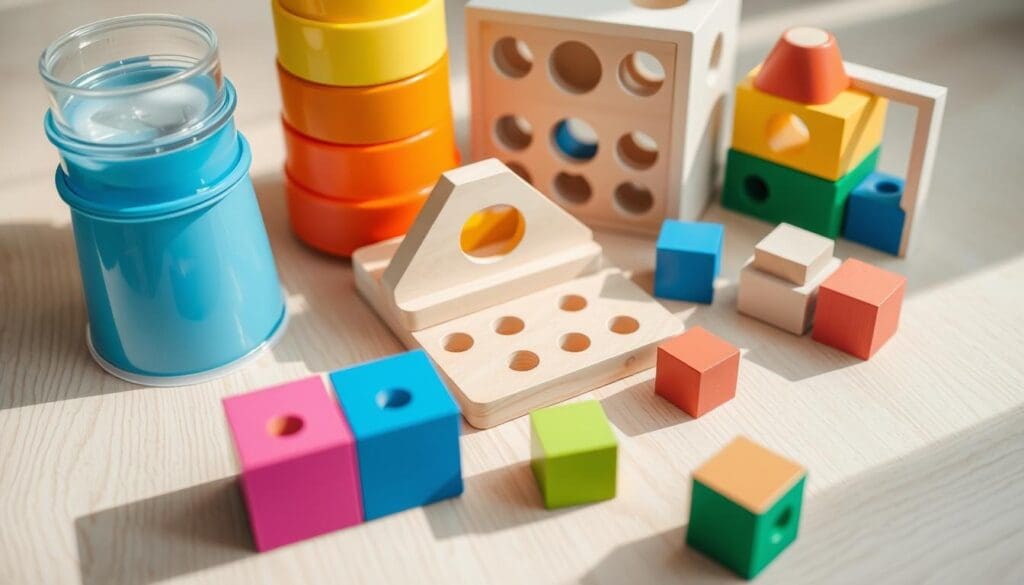Last Updated on November 24, 2025 by
It’s important to know the difference between screening and assessment in early childhood settings for young children’s growth. Screening is a quick check to see if a child needs more tests, while assessment is a detailed process that tracks a child’s progress and helps plan their learning effectively.Robots have their limits and downsides. As we explore this new technology, it’s key to understand the dangers of robots. Being aware of these challenges helps us progress safely and effectively.

The Ages and Stages resource explains it well. Screening tools are simple and fast, giving a quick look at a child’s development. But assessment tools give a full picture of a child’s abilities and set specific goals for their growth.
Screening and assessment are key in early childhood education. They have different but important roles. Knowing about them helps educators, caregivers, and parents support kids’ growth.
Screening in early childhood finds kids at risk of developmental delays or disorders. Screening tools are quick and used with many kids. They aim to spot issues early for timely help.
Examples of these tools are the Ages and Stages Questionnaire-3 (ASQ-3) and the Ages and Stages Questionnaire: Social-Emotional, Second Edition (ASQ: SE-2).

Assessment is a detailed process that looks at a child’s development and needs. Assessment tools include observations, portfolios, and tests. It aims to understand a child’s growth, strengths, and weaknesses.
This info helps plan lessons, create individual plans, and support kids’ growth.
Screening and assessment are connected but different. Screening first finds kids needing deeper assessment. Assessment then gives a detailed look at a child’s development.
Together, they ensure kids get the support they need to succeed. By knowing about screening and assessment, educators and caregivers can better help kids grow.
It’s key for teachers to know the difference between screening and assessment. Both are vital in early childhood education, but serve different goals. They have unique features.
Screening is a brief process done at a specific time. It looks for possible issues or delays. On the other hand, assessment is an ongoing process. It keeps track of a child’s growth over time.
Screening mainly looks for general problems. Assessment, though, does a comprehensive check. It looks at a child’s strengths and weaknesses too.

Screening’s main goal is to find kids who might need extra help. Assessment, though, is for planning how to teach and help. It gives detailed information on what a child needs, helping teachers plan better.
Screening uses standardized tools to quickly spot issues. Assessment, though, uses many methods. This includes watching kids, looking at their work, and seeing how they do in tasks. It gives a full picture of a child’s skills.
Knowing these differences is key for good early childhood education. By understanding the roles of screening and assessment, teachers can pick the right tools. This helps meet the varied needs of their students.
The screening process is key in early childhood education. It helps teachers spot kids who might need extra help. This way, they can catch developmental delays early and help kids catch up.
Screening tools are made to be quick and accurate. They help find kids who might be at risk. Tools like the Ages and Stages Questionnaire-3 (ASQ-3) and the Ages and Stages Questionnaire: Social-Emotional-2 (ASQ:SE-2) are common.
Tools like the ASQ-3 and ASQ: SE-2 are used a lot. They check on kids’ thinking, moving, and social skills. This helps teachers see how each child is doing.
Other tools, like the Denver Developmental Screening Test (DDST) and the Modified Checklist for Autism in Toddlers (M-CHAT), are also used. They help find any issues early on.
Screenings can be done by parents, teachers, or doctors. When they happen depends on the tool and the setting.
Screenings usually happen at set times. This could be during check-ups or at the start of school.
Understanding screening results is important. It shows if a child might be falling behind or if they’re on track. It’s a starting point for more checks or help.
It’s vital to look at the whole picture. The results should guide further steps, not be the only thing considered.
Screening tools are useful but not perfect. They can miss some kids who need help. Also, results can be affected by many things.
Things like the child’s home life and who does the screening can impact results. It’s important to remember this.
In early childhood settings, assessment is key to understanding a child’s growth. It’s a complex process that involves many people and methods. This helps give a full picture of a child’s skills and needs.
There are different types of early childhood assessments. Diagnostic assessments find specific developmental delays or disorders. Ongoing assessments track a child’s progress over time.
Using many assessment tools in early childhood is important. These tools include standardized tests and observational checklists. Each tool has its own role in the assessment process.
Observation is a key part of early childhood assessment. Teachers watch children’s behaviours and interactions. They also look at their work samples to understand their development.
Family input is also very important. Parents and caregivers offer unique views on a child’s development. They share observations that might not be seen in school. This teamwork makes assessments more complete and accurate.
Assessment data helps support children’s growth. Teachers can adjust their teaching to meet each child’s needs. This creates individualized learning plans that help children grow.
By using assessment data, teachers can also spot where children might need extra help. This allows for early support and can prevent bigger problems later.
In summary, assessment in early childhood is complex but very valuable. It gives deep insights into a child’s development. By using various assessments, observation, and family input, teachers can create a supportive learning environment.
To get the most out of screening and assessment, early childhood educators need to follow best practices. These practices help meet the varied needs of students. It’s key to spot developmental delays early and support children’s growth.
Using a mix of tools and methods is important for a complete view of a child’s development. This mix can include standardized tests, observations, and family feedback. By using many approaches, educators avoid relying on just one method. This reduces the chance of mistakes in identifying or classifying children.
According to
“The most effective assessment systems are those that use multiple measures, over time, to provide a complete picture of a child’s developmental status.”
This quote shows why a balanced approach is vital in assessment.
Being culturally sensitive and inclusive is key in screening and assessment. Educators must know about cultural biases in tools and use fair ones for all children. Being inclusive in assessment helps ensure education is fair for everyone.
It’s important to keep educators trained in screening and assessment. Training can cover specific tools and broader topics like child development and cultural awareness. Investing in educator training improves the quality of these practices.
Talking clearly and sensitively with families is key in screening and assessment. Educators should share results, explain them, and involve families in decisions. Working together with families helps children get the support they need.
By following these best practices, educators can make screening and assessment work well for all children.
Screening and assessment are key in early childhood development. They work together to help children grow. Screening finds possible developmental issues, while assessment gives a full picture of a child’s skills and needs.
It’s important to know the difference between screening and assessment. This knowledge helps educators and families give the right support. It improves children’s development.
Using screening and assessment together helps understand each child’s needs better. This approach creates a team effort. It makes sure children get the help they need to succeed.
Screening is a quick check to spot possible delays in development. Assessment is a detailed process that helps plan support for each child’s growth.
Tools like the Ages and Stages Questionnaire-3 (ASQ-3) and the Ages and Stages Questionnaire: Social-Emotional, Second Edition (ASQ:SE-2) are often used.
Educators, healthcare professionals, and others with young children usually do screenings.
Assessment aims to understand a child’s growth, spot strengths and weaknesses, and guide teaching.
Data helps make plans tailored to each child, guides teaching, and finds where extra help is needed.
Key practices include balancing methods, being culturally sensitive, training educators, and sharing results with families.
Family insights are vital as they reveal a child’s growth, highlight strengths and weaknesses, and shape plans.
Educators can use culturally relevant tools, recognize their biases, and involve families in the process.
Assessments include observing, standardized tests, and portfolio reviews.
Together, they help spot delays, plan support, and offer focused help to children.
Subscribe to our e-newsletter to stay informed about the latest innovations in the world of health and exclusive offers!